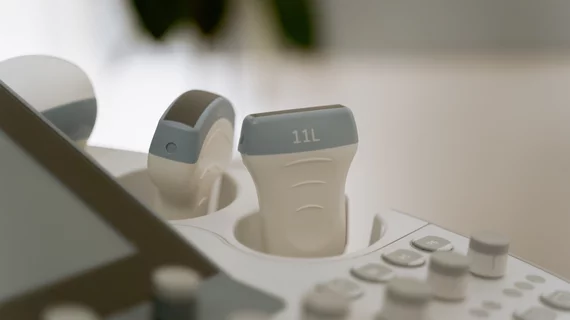Is ultrasound necessary for all interventional procedures requiring femoral artery access?
Several interventional radiology procedures utilize ultrasound guidance for femoral artery access, but a new study is questioning the modality’s effectiveness.
Published in the European Journal of Radiology, the paper suggests that ultrasound guidance does not significantly decrease complication rates, indicating that its use might not be necessary for all procedures.
“The common femoral artery is the most established site of access for neuroendovascular procedures due to its large caliber and superficial location, rendering it readily compressible against the underlying head of the femur. Common complications related to femoral arterial access include groin hematoma, retroperitoneal hemorrhage, pseudoaneurysm, arterial dissection, thrombo-occlusion and, rarely, iatrogenic arteriovenous fistula,” corresponding author Tze Phei Kee, MD, with the Division of Neuroradiology at Toronto Western Hospital, and co-authors explained.
To determine whether ultrasound improves the process of accessing the femoral artery, researchers analyzed data from more than 3,000 procedures with and without imaging guidance. This included cases from nearly 2,400 patients over a six-year period. The team evaluated complication rates and various risk factors that increased the likelihood of unexpected incidents.
Overall, the complication rate was low, at 2%, for the entire cohort. There were no statistically significant differences between the groups in terms of access-site complications. However, some procedures, particularly endovascular thrombectomy (EVT), benefited more from ultrasound. Procedures requiring a larger sheath in general also had lower complication rates when ultrasound was utilized.
“As transfemoral access remains the preferred first-line approach for EVT due to its larger caliber (to accommodate larger sheath) and shorter procedural time, it is advisable that in these high-risk cases, the interventionalists should focus on precision and efficacy during femoral arterial access with the help of ultrasound guidance,” the authors suggested.
These findings should be taken into consideration when planning both interventional and diagnostic procedures deemed more high-risk, they added.
The study abstract is available here.

